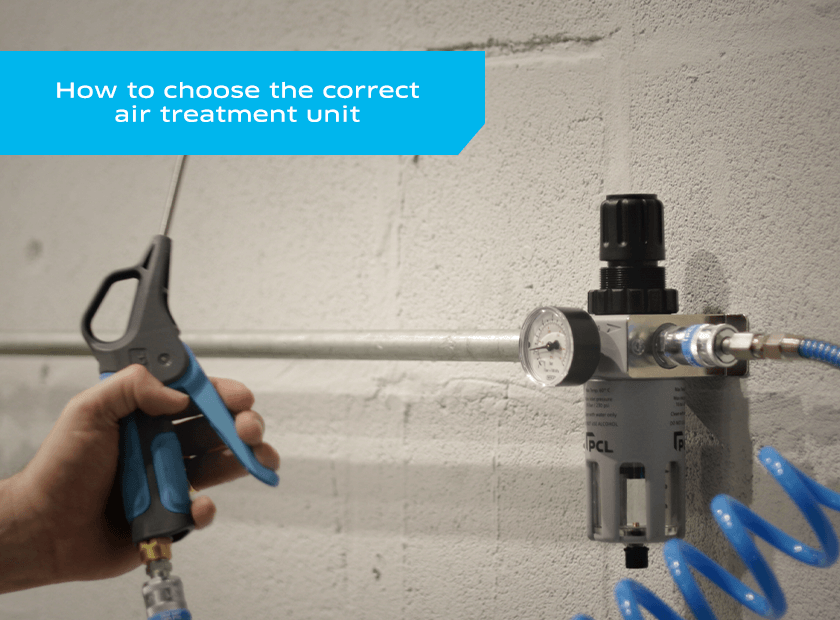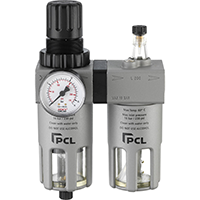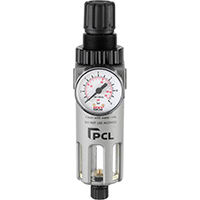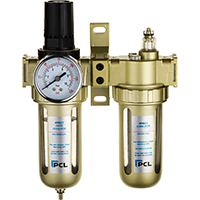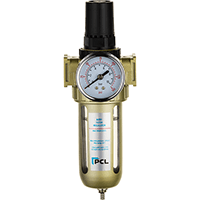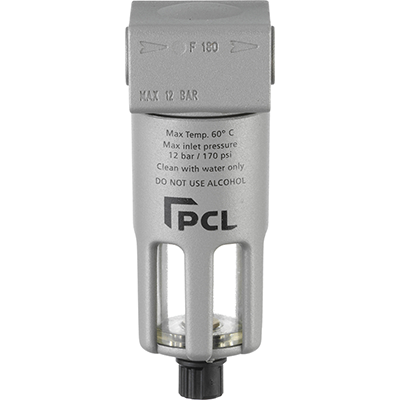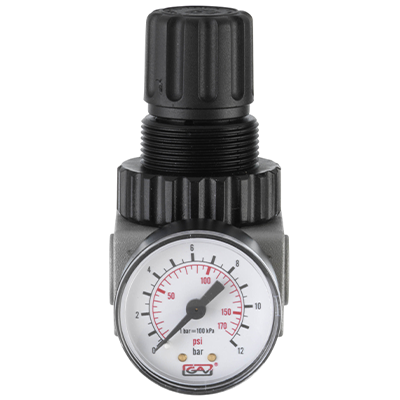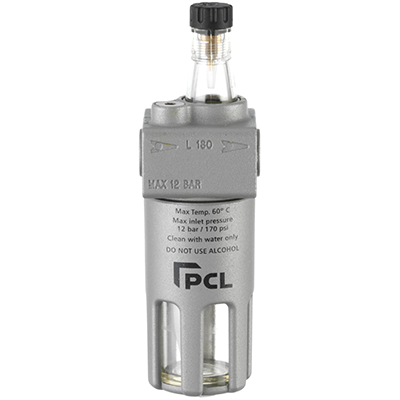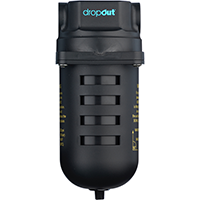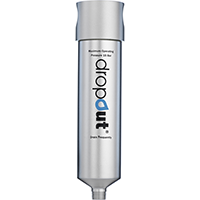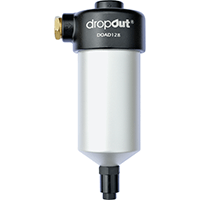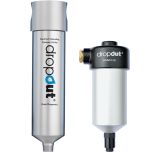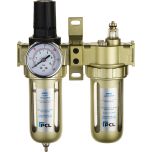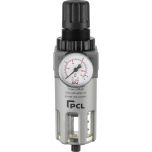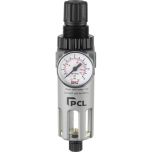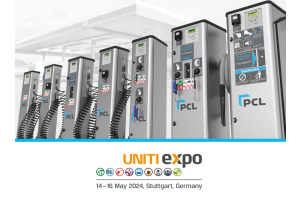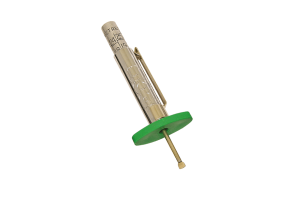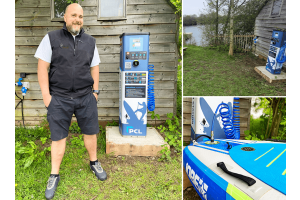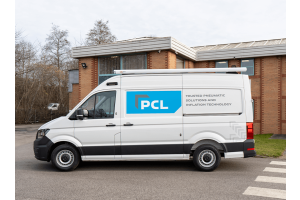Why use an air treatment unit?
Compressed air systems must be kept clean and dry to ensure continued reliability. Precise pressure control also keeps pneumatic systems operating efficiently. Unregulated, unfiltered, unlubricated air pressure can increase equipment wear, leading to reduced tool life and increased costs.
Filter, Regulator and Lubricators (FRLs) ensure each tool receives a clean, lubricated supply of compressed air at the ideal pressure for optimum performance. FRL units should be mounted as close to the tool as possible - preferably at point of use where the tool hose connects to the system - and checked regularly.
What Air Treatment Units are available?
Filter, Regulator and Lubricators are available as individual units or combined units, which unit you require will depend on what you will be using the compressed air for and whether your application is occasional or professional continual use.
What is a filter?
Filters are designed to remove solid particles (e.g. dust, dirt, rust) and separate liquids (e.g. water, oil) from compressed air systems.
What is a regulator?
Operating pneumatic tools at the manufacturers recommended pressure will reduce premature wear of the tool, reduce operating costs and increase safety.
Regulators allow the operator to adjust the pressure or flow from the compressor tank to the pneumatic tools to suit specific applications.
Tamper-proof regulators are also available and can be locked once the pressure is set. These regulators are ideal for tools such as blowguns, where the pressure must not exceed 2 bar as recommended by the Occupational Safety & Health Administration (OSHA).
What is a lubricator?
Installed after filters and close to the point of use, the function of the lubricator is to release controlled quantities of oil into the air system, to help prevent friction and wear of pneumatic tools and equipment.
Five Factors to consider when selecting an air treatment unit
1. Environment
The unit must be designed and constructed from appropriate material to withstand temperature and climate.
2. Lubrication
For frequently used tools like impact wrenches and ratchets, a lubricator is required and must always be fitted at the final stage downstream on the air supply after any filtration. In-line lubricators such as the INL6 can be connected on the tool or hose itself.
A fitted lubricator is not always needed, for example if only one air output is available. Also, some tools, including digital tyre inflators and spray equipment, require little or no lubrication, and mechanical inflators may only need monthly lubrication. Therefore, a frequent lubricator is not necessary and may impact performance. Simply oil the relevant tools manually using general air tool oil.
3. Airflow and port size
FRL units must be properly sized to match the required air flow. Significant increases in flow rates can be achieved using larger ports, but changing port size within a system can affect the fine tuning to flow rate, which may be required for some applications.
Always refer to the equipment manufacturer’s recommendations and select an FRL with an air flow capacity greater than the tool’s requirements.
4. Filtration level
When considering the level of filtration required, you must factor in the unit’s micron rating. Most industrial equipment and tools like impact wrenches only need 10-micron filtration, whilst more-sensitive components and instruments typically demand 5-micron filtration. Food, beverage and pharmaceutical applications routinely demand even finer filtration. Ask the equipment manufacturer for exact filtration requirements.
Don’t opt for a finer filter than necessary. Smaller micron-rated filters have higher pressure drops across the filter, so opting for a 5-micron filter when a 10-micron unit is enough will increase energy consumption and equipment wear, leading to higher operating and maintenance costs.
|
|
|
|
5. Drain Type
Standard filters commonly feature a manual or semi-automatic drain at the bottom of the filter bowl. A manual drain requires the operator to manually release the accumulated solid particles and liquids from the filter, while the semi-automatic drain will automatically drain when the system is depressurised, however the operator can still manually open the drain when in use.
Some filters - like the PDO300PA - feature a built-in auto drain, alternativity auto drains can be purchased separately. Designed to remove all contaminants from the filter automatically, auto drains typically feature a float which will open the drain when liquids reach a certain level, the drain will also open when the air system is depressurised.
Auto drains are recommended for applications that require high/continual usage or humid environments where frequent drainage is required. Auto drains are also ideal when the filter is installed in a hard-to-reach area.
|
Manual drain |
Manual / Semi-Automatic drain |
|
|
||
|
Filters with auto drain |
Auto drain |
|

